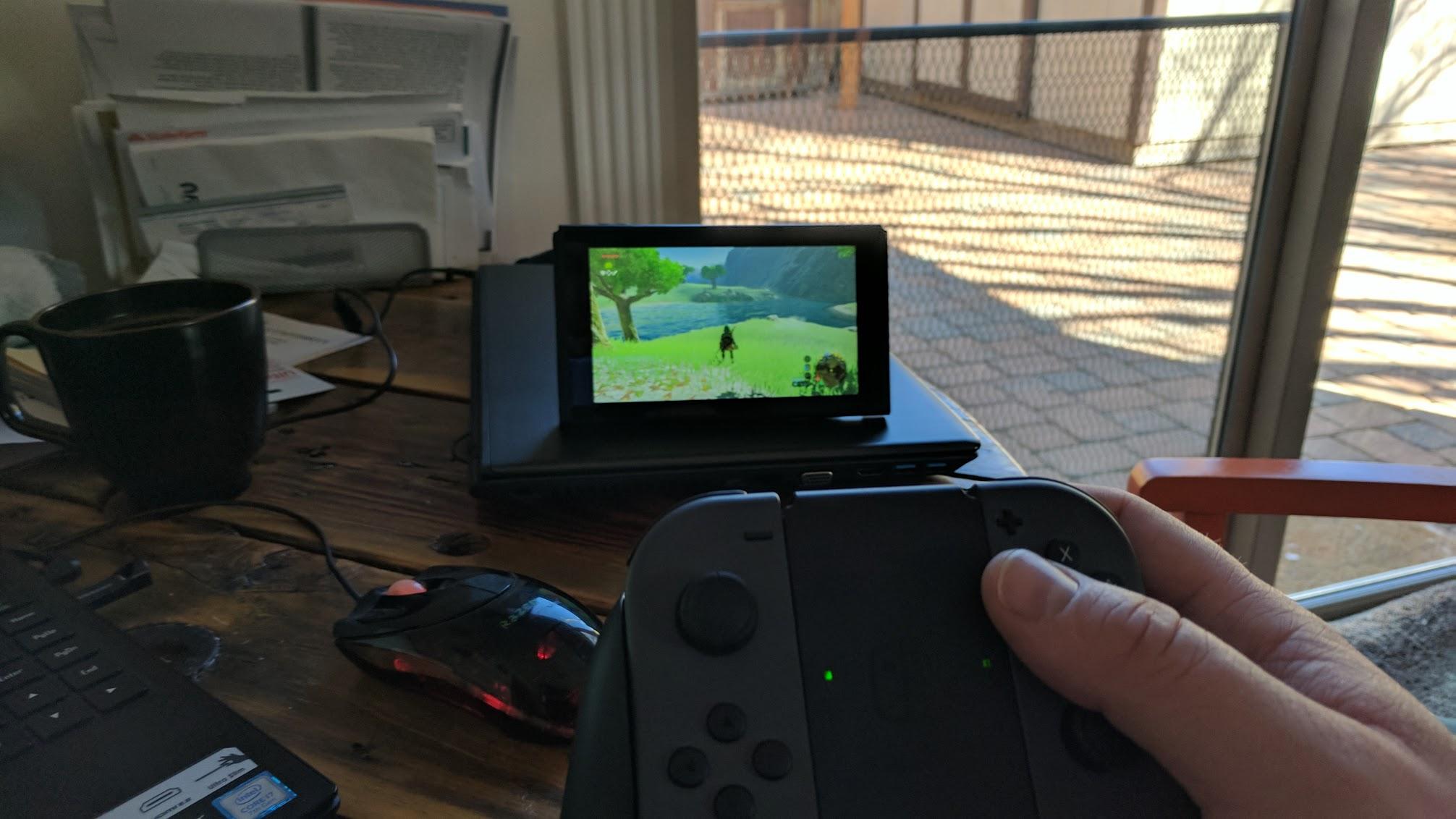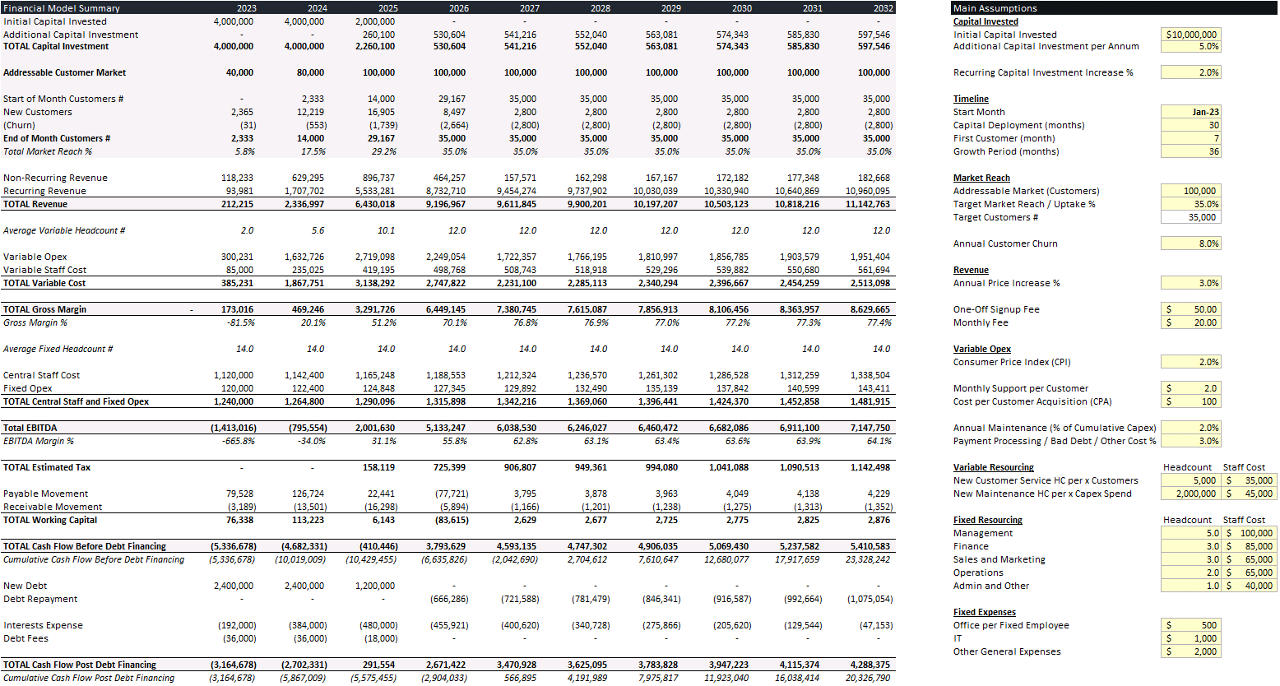Nintendo's Technological Shift: The Switch Era

Table of Contents
The Hybrid Revolution: A Paradigm Shift in Gaming
The Nintendo Switch's groundbreaking hybrid design is arguably its most defining feature. This ability to seamlessly transition between handheld and docked modes revolutionized gameplay experiences and expanded the console's appeal to a broader audience. This wasn't just an incremental improvement; it was a paradigm shift.
- Impact on gameplay experiences: The portability offered unparalleled freedom, allowing players to enjoy their favorite titles anywhere. Couch co-op also received a boost, with the ability to easily share the joy-cons and play together on a larger screen.
- Expansion of the player base: The hybrid nature appealed to both dedicated gamers and casual players, broadening the Switch's market reach significantly. The accessibility of playing both on the go and at home attracted a wider demographic.
- New design challenges for game developers: Creating games that performed optimally in both handheld and docked modes presented unique challenges for developers, necessitating careful optimization and consideration of screen resolutions and processing power.
The advantages of the hybrid design are clear: unparalleled flexibility and broadened accessibility. However, there are disadvantages. The smaller screen size in handheld mode can sometimes limit the visual experience, and the processing power is not as robust as dedicated home consoles. Despite these limitations, the Nintendo Switch hybrid design has proven to be a resounding success.
Enhanced Processing Power and Graphics Capabilities
While not as powerful as the PlayStation or Xbox consoles, the Nintendo Switch represented a significant leap forward in processing power compared to previous Nintendo handhelds and consoles like the Wii U. This improved performance translated into enhanced graphics and smoother gameplay.
- Technological advancements: The Switch utilizes a custom Tegra processor, allowing for improved graphics and performance compared to its predecessors. This enabled richer visuals and more complex game worlds.
- Limitations of the hardware: The Switch's hardware limitations necessitated clever optimization techniques from developers to achieve satisfying performance. This sometimes resulted in compromises in visual fidelity compared to higher-end consoles.
- Comparison to PlayStation and Xbox: The Switch's processing power falls short of the PlayStation and Xbox consoles. However, it maintains a competitive edge through its unique hybrid design and focus on specific genres.
The Switch’s design prioritizes energy efficiency to maintain long battery life in handheld mode. This balance between performance and energy efficiency is a key element of its successful hybrid design.
The Rise of the Nintendo eShop and Digital Distribution
The Nintendo eShop played a crucial role in the Switch's success. It provided easy access to a vast library of digital games, revolutionizing game distribution and impacting sales strategies.
- Convenience and accessibility: Purchasing and downloading games directly to the console eliminated the need for physical media, offering unparalleled convenience.
- Impact on game distribution and sales strategies: The eShop opened up new avenues for indie developers, allowing smaller studios to reach a wider audience than ever before.
- The role of digital-only titles and indie games: The eShop became a haven for digital-only titles and indie games, significantly diversifying the Switch's game library.
- Expansion of online services and subscriptions: Nintendo Switch Online, a subscription service providing online multiplayer and access to a library of classic NES and SNES games, further enhanced the digital ecosystem.
While physical games still hold a place, the primarily digital distribution model of the eShop has significantly streamlined the process for both publishers and consumers. However, concerns regarding digital ownership and the potential for server outages remain.
Joy-Con Innovation and Motion Controls
The Joy-Con controllers are a defining feature of the Nintendo Switch, pushing the boundaries of controller innovation. Their detachable nature and unique features have profoundly impacted the gaming experience.
- HD Rumble: This feature provided a level of haptic feedback previously unseen in gaming, enhancing immersion and realism.
- Motion controls: The Joy-Cons’ motion controls offer innovative gameplay mechanics, seamlessly integrating into various titles.
- Innovative uses of the detachable Joy-Cons: The ability to detach the Joy-Cons allowed for unique gameplay experiences, such as playing with a single Joy-Con or using them independently in multiplayer scenarios.
These features have not only enhanced gameplay but also opened up new possibilities for accessibility and innovative game designs.
Impact on Third-Party Support
The Nintendo Switch surprised many with its strong third-party support. Major publishers recognized the potential of the console's hybrid design and large player base.
- Attracting major franchises: Many major franchises made their way to the Switch, offering gamers a wide selection of titles across various genres.
- The challenges and benefits of developing for the Switch's unique architecture: The Switch's unique architecture presented challenges for developers but also offered opportunities for creative game design.
- Impact on game diversity: The influx of third-party titles significantly broadened the variety of games available on the Switch, catering to a wider range of player preferences.
The evolving relationship between Nintendo and third-party developers is a testament to the Switch's success. It has demonstrated that a hybrid console can thrive and compete effectively in the modern gaming landscape.
Conclusion
The Nintendo Switch’s technological shift represents a pivotal moment in gaming history. Its hybrid design, improved processing power, and robust digital distribution model have not only revitalized Nintendo but also redefined the possibilities of console gaming. The innovative Joy-Con controllers further solidify its unique position in the market. While challenges remain, the impact of the Nintendo Switch technological shift is undeniable, securing its place as a landmark console. Learn more about this groundbreaking console and its impact on the gaming industry by exploring further resources on the Nintendo Switch technological shift.

Featured Posts
-
 Eurovision 2025 A Guide To The Contestants
May 29, 2025
Eurovision 2025 A Guide To The Contestants
May 29, 2025 -
 Los Angeles Wildfires A Disturbing Trend In Disaster Gambling
May 29, 2025
Los Angeles Wildfires A Disturbing Trend In Disaster Gambling
May 29, 2025 -
 Teluss Five Year Network Investment Plan A Detailed Look
May 29, 2025
Teluss Five Year Network Investment Plan A Detailed Look
May 29, 2025 -
 Ipa 10 Krisimes Stigmes Apo Toys Protoys Treis Mines Tis Deyteris T Hiteias Tramp
May 29, 2025
Ipa 10 Krisimes Stigmes Apo Toys Protoys Treis Mines Tis Deyteris T Hiteias Tramp
May 29, 2025 -
 The X Files Episode That Launched Bryan Cranstons Career Before Breaking Bad
May 29, 2025
The X Files Episode That Launched Bryan Cranstons Career Before Breaking Bad
May 29, 2025
Latest Posts
-
 Riyadh Rematch Munguia Edges Out Surace On Points
May 31, 2025
Riyadh Rematch Munguia Edges Out Surace On Points
May 31, 2025 -
 Munguia Addresses Failed Drug Test Full Statement Analysis
May 31, 2025
Munguia Addresses Failed Drug Test Full Statement Analysis
May 31, 2025 -
 Jaime Munguias Drug Test Result Official Statement Released
May 31, 2025
Jaime Munguias Drug Test Result Official Statement Released
May 31, 2025 -
 Tactical Triumph How Jaime Munguia Adjusted And Won The Rematch Against Bruno Surace
May 31, 2025
Tactical Triumph How Jaime Munguia Adjusted And Won The Rematch Against Bruno Surace
May 31, 2025 -
 Jaime Munguias Dominant Win Redemption Against Bruno Carace
May 31, 2025
Jaime Munguias Dominant Win Redemption Against Bruno Carace
May 31, 2025
